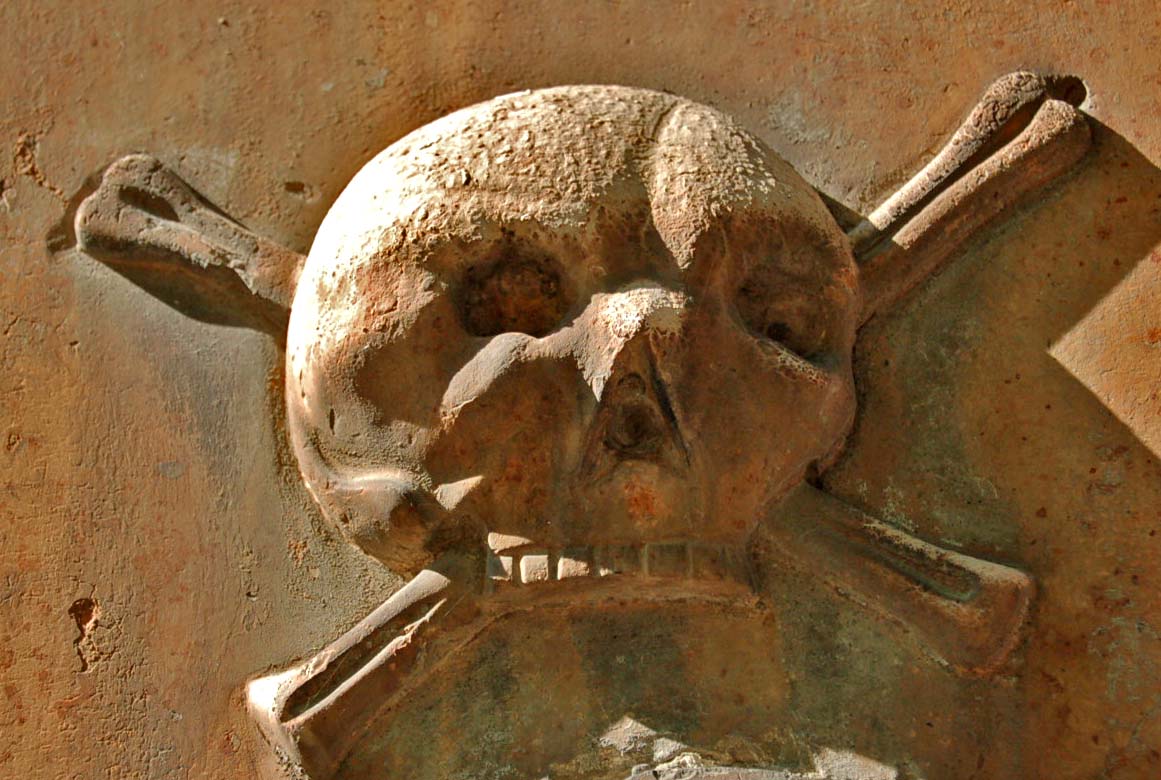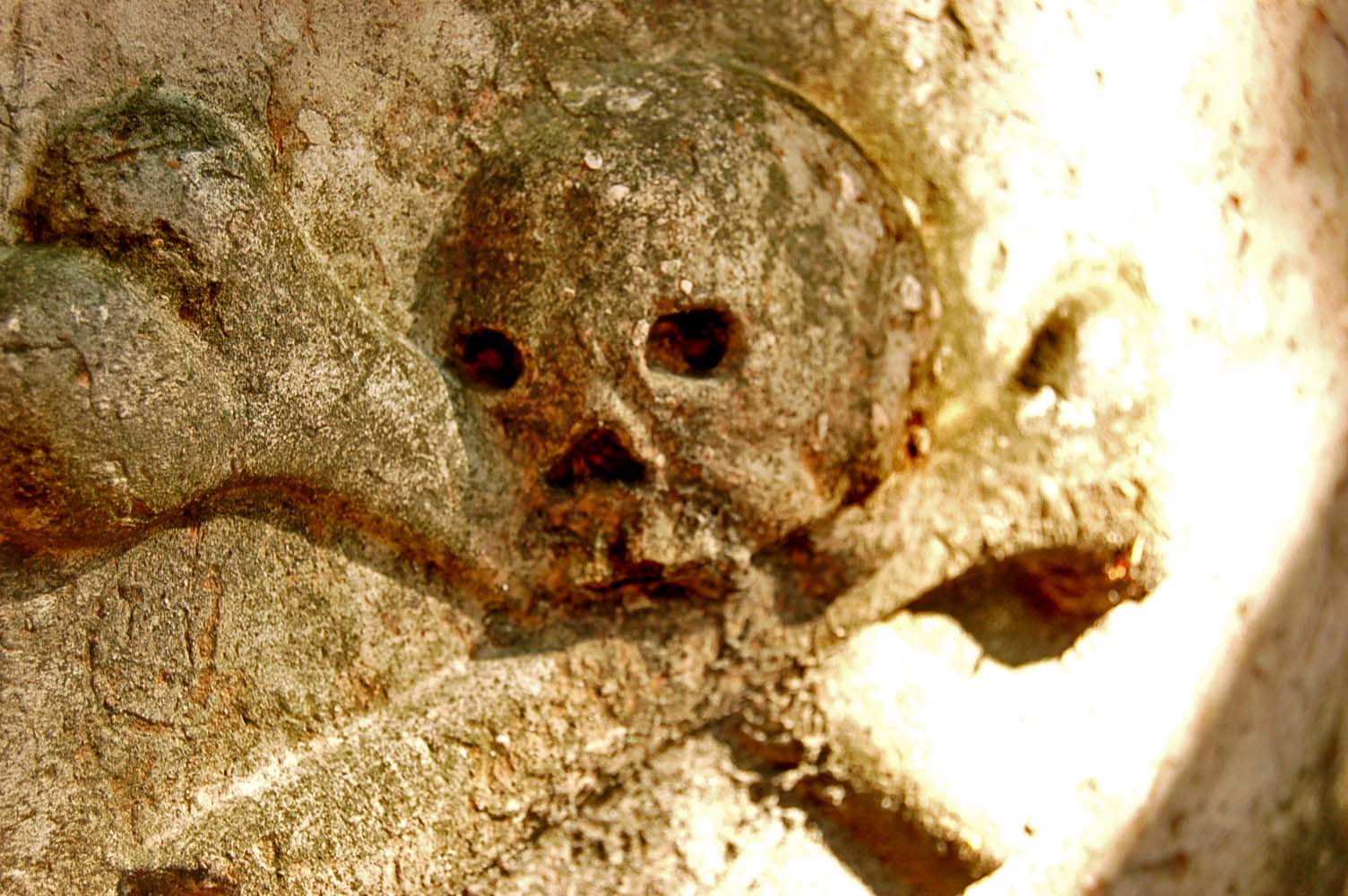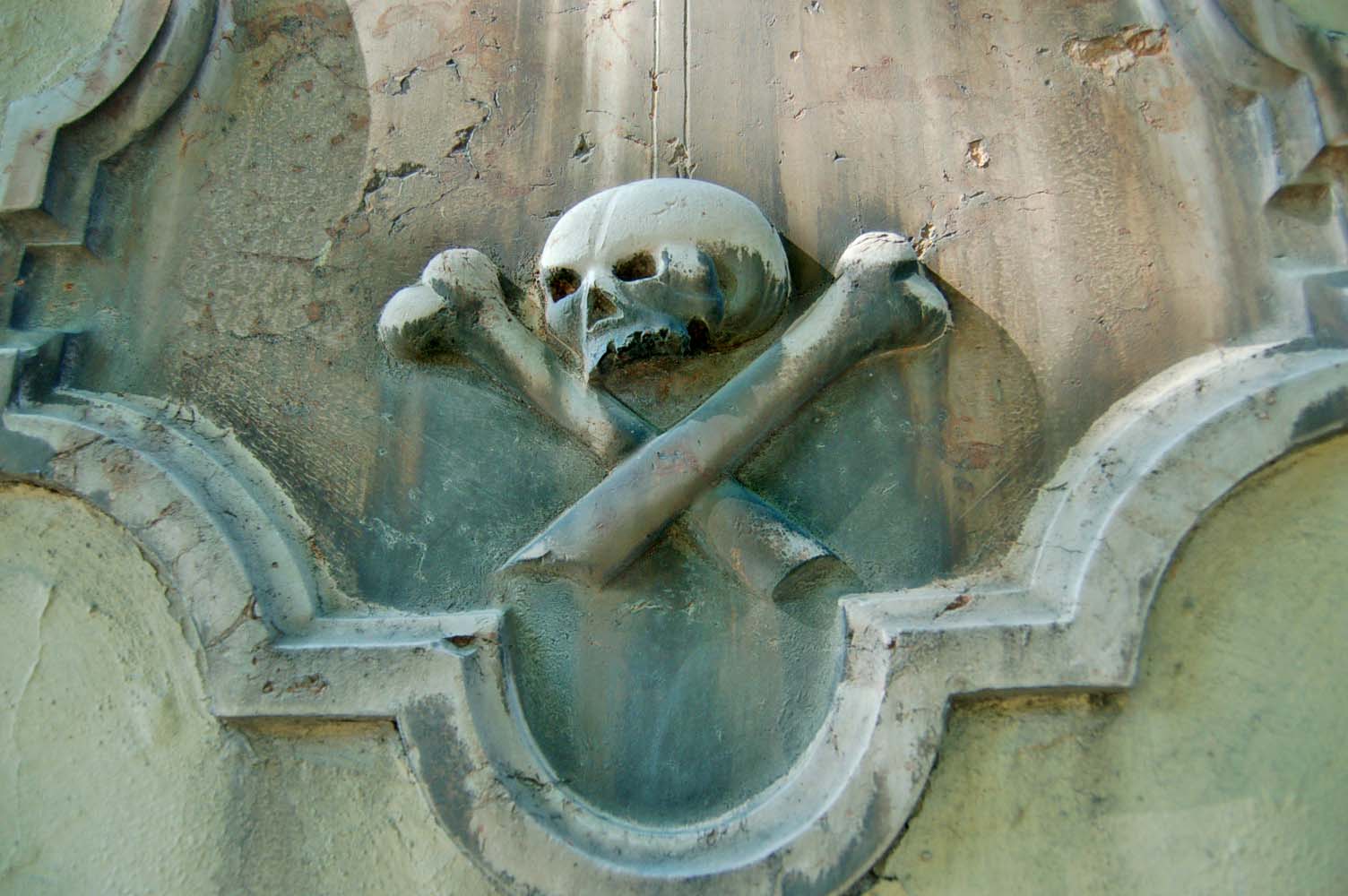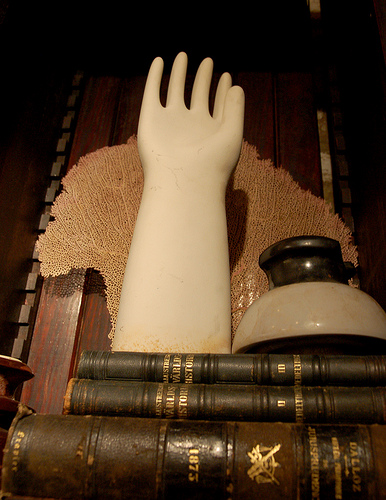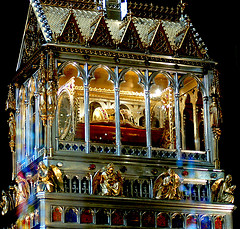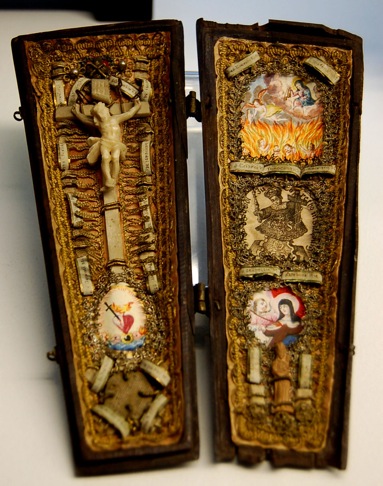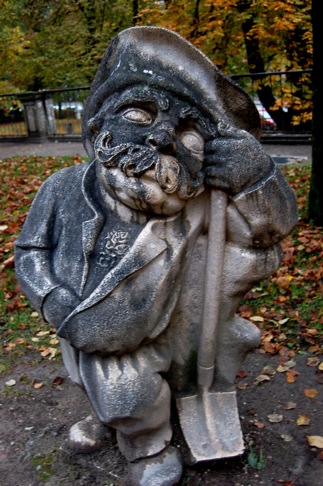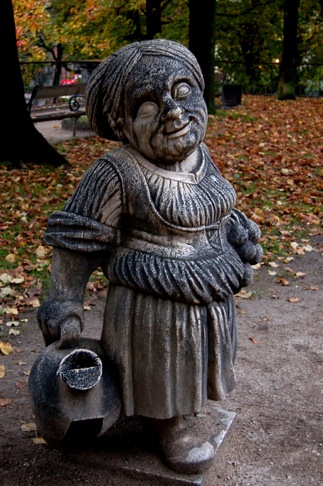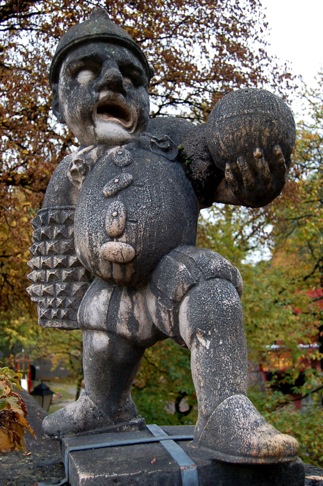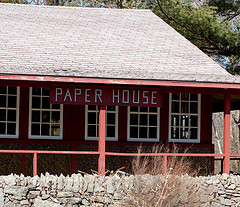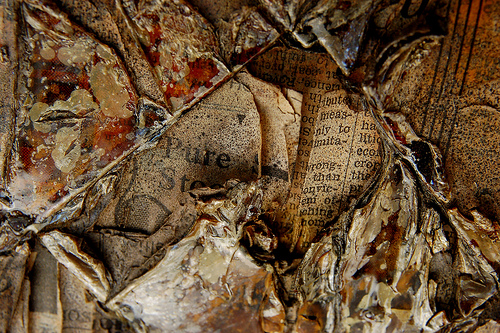 The police officer just intended to just get a drink. Perhaps he was going to ask a few questions about the mysterious disappearances that had been reported for the last few years. He certainly didn’t intend to leave Savannah; much less, the continent. Too bad for him. When he woke up he couldn’t remember leaving the bar, yet nonetheless found himself on a ship traveling to China. The officer had been shanghaied.
The police officer just intended to just get a drink. Perhaps he was going to ask a few questions about the mysterious disappearances that had been reported for the last few years. He certainly didn’t intend to leave Savannah; much less, the continent. Too bad for him. When he woke up he couldn’t remember leaving the bar, yet nonetheless found himself on a ship traveling to China. The officer had been shanghaied.
Experimental botany, murderous pirates, secret tunnels and an all you can eat buffet; there are very few places where these things can all be found together. Savannah’s “Pirates’ House,” is one place where they can, with each time period written in ghostly layers throughout the house. Despite having an animatronic pirate and a kind of theme-park atmosphere, the Pirates’ House is indeed filled with a long history, and in a strange way the Pirates’ House traces the path of Georgia’s founding to today. Curious Expeditions recently had the opportunity to visit Savannah and the Pirates’ House, and found that the American South is every bit as surprising as anything we’ve seen overseas.
 When British General James Oglethorpe landed on the banks of the Savannah river in 1733 he intended to build a perfect community. Armed with a Royal Charter to found the colony, Georgia was the last of thirteen British colonies settled in the new world. For the British it represented an important buffer between the Spanish in Florida, but to Oglethorpe, a prison reformer as well as general, it represented a chance to build a utopian colony and Oglethorpe intended to do it right.
When British General James Oglethorpe landed on the banks of the Savannah river in 1733 he intended to build a perfect community. Armed with a Royal Charter to found the colony, Georgia was the last of thirteen British colonies settled in the new world. For the British it represented an important buffer between the Spanish in Florida, but to Oglethorpe, a prison reformer as well as general, it represented a chance to build a utopian colony and Oglethorpe intended to do it right.
Aided by Mary Musgrove (Indian name: Coosaponakeesa), a local trader who spoke English, Oglethorpe was able to establish a peaceful and economically beneficial relationship with the local Tomochici and Yamacraw Indians. Oglethorpe was a tolerant man in need of skilled labor and his Georgia colony charter accepted settlers of all religions except Catholics, a means of keeping out Spanish sympathizers to the south. The only other group barred entry into the town were lawyers, which is, well, understandable. Other things Oglethorpe’s charter did not allow within Georgia was hard liquor and slavery, as Ogilthorpe felt both would ruin the industrious nature of Savannah’s colonists.
 Along with laying out the town in its beautiful format of park squares, one of the first priorities was to plant an experimental botanical garden on the banks of the Savannah. Based on the Chealsea Botanical Garden in London it was established to help find the best way to grow potash, wine grapes and most importantly, cultivate mulberry silkworms in the mulberry trees that grew in Georgia, producing valuable silk. In 1734 they built a little “herb house” (seen to your left) at the top of the gardens where the gardener stayed. Savannah was poised to be Oglethorpe’s southern Eden; tolerant, friendly with the Indians, free of booze and slavery, and rich in silk. Things did not work out.
Along with laying out the town in its beautiful format of park squares, one of the first priorities was to plant an experimental botanical garden on the banks of the Savannah. Based on the Chealsea Botanical Garden in London it was established to help find the best way to grow potash, wine grapes and most importantly, cultivate mulberry silkworms in the mulberry trees that grew in Georgia, producing valuable silk. In 1734 they built a little “herb house” (seen to your left) at the top of the gardens where the gardener stayed. Savannah was poised to be Oglethorpe’s southern Eden; tolerant, friendly with the Indians, free of booze and slavery, and rich in silk. Things did not work out.
By 1743 Oglethorpe, the founder of the Savannah experiment, was called back to England to answer to allegations of mismanaging the colony, and he never returned. The botanical garden failed as it was the wrong type of mulberry tree to support silkworms and by 1751 liquor, slavery and lawyers had all found their way into the colony. Savannah settlers were expelled from the safety of their botanical experiment and into the harsh realities of being a newly minted port town. Eden had failed, and a much rougher element was ready to take its place. There was even a building ready to take them in.
The “herb house” built at the top of the garden was now expanded into a fully swinging tavern that catered to just that rough element. The inn welcomed salty sailors, merchant ships and soldiers that came to port and provided them with drink, food, lodging as well as other services provided by the staff of young ladies at the tavern. There was another type of seafarer who was known to frequent the tavern and inn. They were the roughest yet. They were pirates.
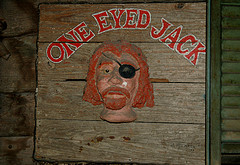 Pirates get a bad rap. They were cut-throat, drunken maniacs, sure, but what they did have was great benefits. Compared to other sailing outfits, pirates often had better food, better pay, better sleeping arrangements (all still horrible of course) than other soldier or merchant vessels. Pirates at least had a democratic decision-making system. Comparatively luxurious, the pirate ships often had plenty of people willing to join them. Not so for your standard military or merchant ships. Sailors regularly jumped ship, and after a few days stay in a port, a ship could be shorthanded by half a dozen men. This is where the “Pirates’ House” came in. Besides beer, food and wenches, the “Pirate House” did a brisk trade in something else; they found new sailors for the ships. Rather than going to all the trouble of convincing people of what a nice life it was at sea (people knew better) they simply kidnapped them.
Pirates get a bad rap. They were cut-throat, drunken maniacs, sure, but what they did have was great benefits. Compared to other sailing outfits, pirates often had better food, better pay, better sleeping arrangements (all still horrible of course) than other soldier or merchant vessels. Pirates at least had a democratic decision-making system. Comparatively luxurious, the pirate ships often had plenty of people willing to join them. Not so for your standard military or merchant ships. Sailors regularly jumped ship, and after a few days stay in a port, a ship could be shorthanded by half a dozen men. This is where the “Pirates’ House” came in. Besides beer, food and wenches, the “Pirate House” did a brisk trade in something else; they found new sailors for the ships. Rather than going to all the trouble of convincing people of what a nice life it was at sea (people knew better) they simply kidnapped them.
 Known as being “shanghaied” it usually went something like this. People would come to the bar, sometimes sailors from another vessel, sometimes travelers. It was always easier if they didn’t have relatives or friends in the town. The bar would then treat the stranger to a couple of “free” drinks. Either they got them pass out drunk, or to hasten the process would lace the drinks with Laudanum. Failing that, they would simply bash the poor guy over the head. The unconsciousness men would then be dumped into a tunnel in the corner of the Pirates’ House that supposedly ran from the bar under the ground (seen right) and let out straight onto the docks.
Known as being “shanghaied” it usually went something like this. People would come to the bar, sometimes sailors from another vessel, sometimes travelers. It was always easier if they didn’t have relatives or friends in the town. The bar would then treat the stranger to a couple of “free” drinks. Either they got them pass out drunk, or to hasten the process would lace the drinks with Laudanum. Failing that, they would simply bash the poor guy over the head. The unconsciousness men would then be dumped into a tunnel in the corner of the Pirates’ House that supposedly ran from the bar under the ground (seen right) and let out straight onto the docks.
The men would find themselves waking up on a boat miles from the shore headed towards China, and hence had been “Shanghaied.” They could either serve their new found duties or jump into the water and swim the 20 miles back. Most chose to stay. A particularly famous story is that of the police officer who came to the Pirates’ House and was Shanghaied. It supposedly took him more then two years to get back to Savannah. Another particularly gruesome tale involves the bartender knocking a man unconscious and placing him in a secret compartment until a ship came looking for a readied sailor. The man stayed unconscious, the ship never came looking, and so the man simply rotted away in the secret compartment. The stench apparently had little effect on business.
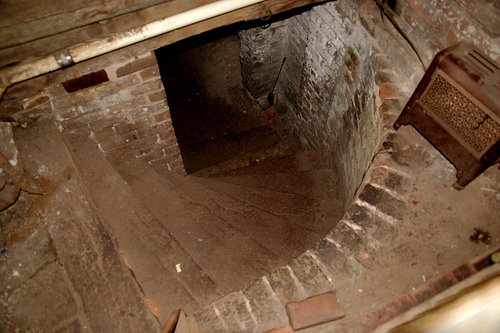 The Pirates’ House saw a number of other pirate related activities, including the torturing of pirates in the basement (stairs to the basement seen on the right) by Savannah officials. The inn also supposedly played host to Robert Louis Stevenson, author of Treasure Island, and according to the Pirates’ House placemat (that counts as a primary source, right?) Stevenson met the real Captain Flint at the Pirates’ House, and based his fictional Captain Flint on him. Though it remains unclear as to whether Flint was a real person or not, he is said to have died in the Pirates’ House and haunt the premises to this day along with a myriad of other restless souls.
The Pirates’ House saw a number of other pirate related activities, including the torturing of pirates in the basement (stairs to the basement seen on the right) by Savannah officials. The inn also supposedly played host to Robert Louis Stevenson, author of Treasure Island, and according to the Pirates’ House placemat (that counts as a primary source, right?) Stevenson met the real Captain Flint at the Pirates’ House, and based his fictional Captain Flint on him. Though it remains unclear as to whether Flint was a real person or not, he is said to have died in the Pirates’ House and haunt the premises to this day along with a myriad of other restless souls.
The Pirates’ House has gone through one more transformation, one mirrored by the rest of Savannah. Having avoided being burned in the civil war, Savannah has some of the best antebellum architecture in the country. Savannah fell into hard times around the turn of the century, and Savannah was in bad shape in the 1930’s. Luckily, it was around this time that Savannah became acutely aware of its own history and its status as a Southern icon. The founding of the Historic Savannah Foundation saved much of old Savannah from being paved over.
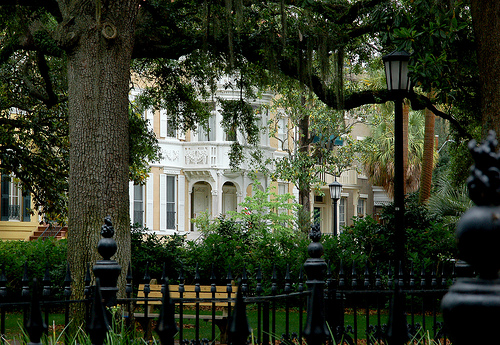 Today Savannah is a gorgeous city with a robust tourist industry. The Pirates’ House, built on the site of the failed botanical Eden and housing the Herb Garret (the oldest building in Georgia), is quite aware of its own unique history has also become a family friendly restaurant, complete with both automatic and flesh-and-blood pirates. (Pirate re-enactors, anyway.) While the line of people waiting for the buffet, combined with the history of Shanghaiing and murder cause a kind of cognitive dissonance, don’t look on the Pirate House’s current cheesy incarnation too harshly. It, like the rough and tumble brawling tavern before it, and the botanical garden and Herb House before that, are appropriate for their moment in time. Savannah having started as a Utopian vision has circled around to be much closer what Oglethorpe had in mind, then it was in 1753. As long as Savannah continues to regard its history with such reverence, it will always be a Southern jewel, regardless if it comes with a hot buffet and costumed pirate or not.
Today Savannah is a gorgeous city with a robust tourist industry. The Pirates’ House, built on the site of the failed botanical Eden and housing the Herb Garret (the oldest building in Georgia), is quite aware of its own unique history has also become a family friendly restaurant, complete with both automatic and flesh-and-blood pirates. (Pirate re-enactors, anyway.) While the line of people waiting for the buffet, combined with the history of Shanghaiing and murder cause a kind of cognitive dissonance, don’t look on the Pirate House’s current cheesy incarnation too harshly. It, like the rough and tumble brawling tavern before it, and the botanical garden and Herb House before that, are appropriate for their moment in time. Savannah having started as a Utopian vision has circled around to be much closer what Oglethorpe had in mind, then it was in 1753. As long as Savannah continues to regard its history with such reverence, it will always be a Southern jewel, regardless if it comes with a hot buffet and costumed pirate or not.
For more information check wiki’s
here,
here and
here and the Pirate House website can be found
here.

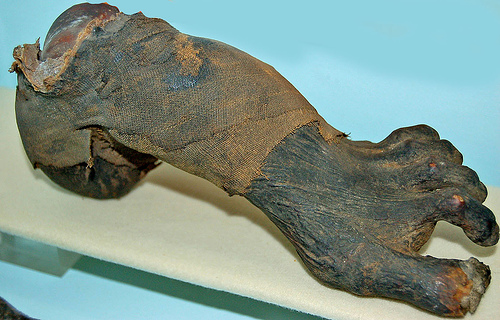


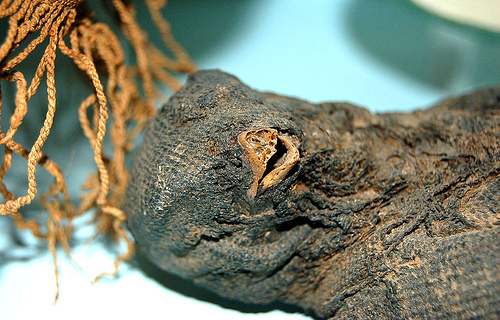
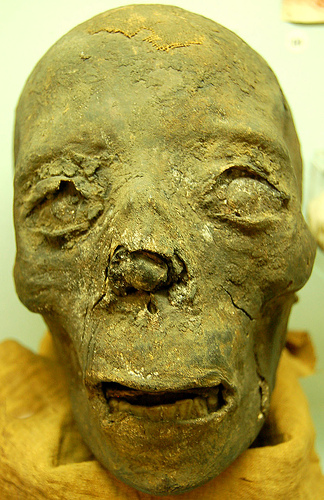





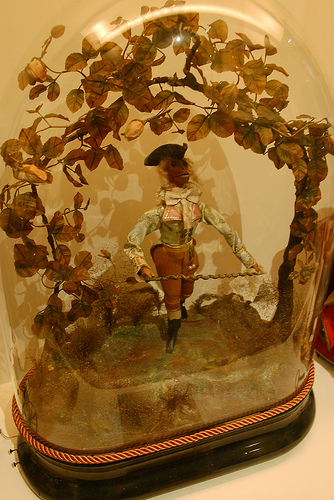

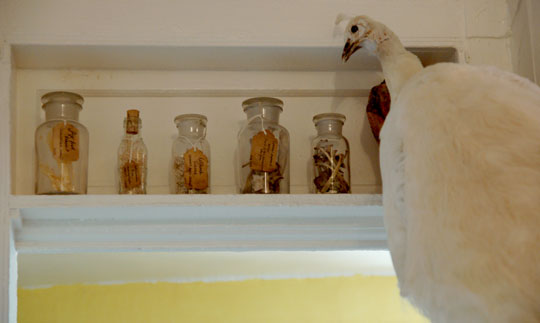

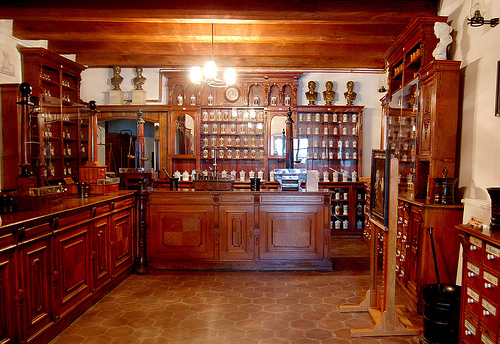

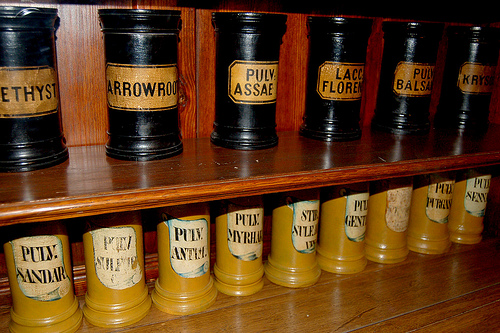

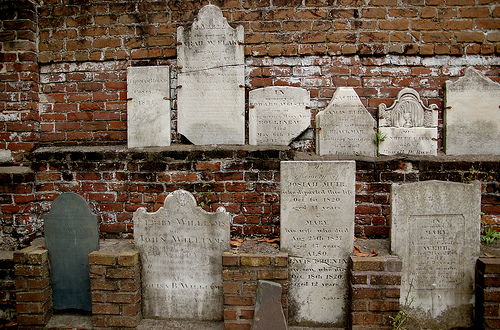
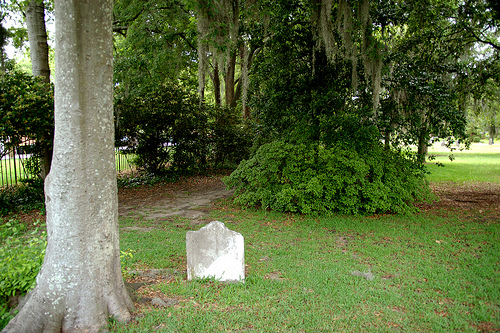

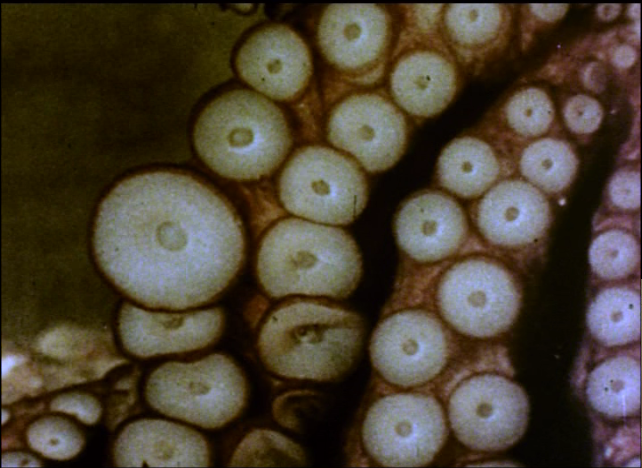 Date: Friday, July 10
Date: Friday, July 10

